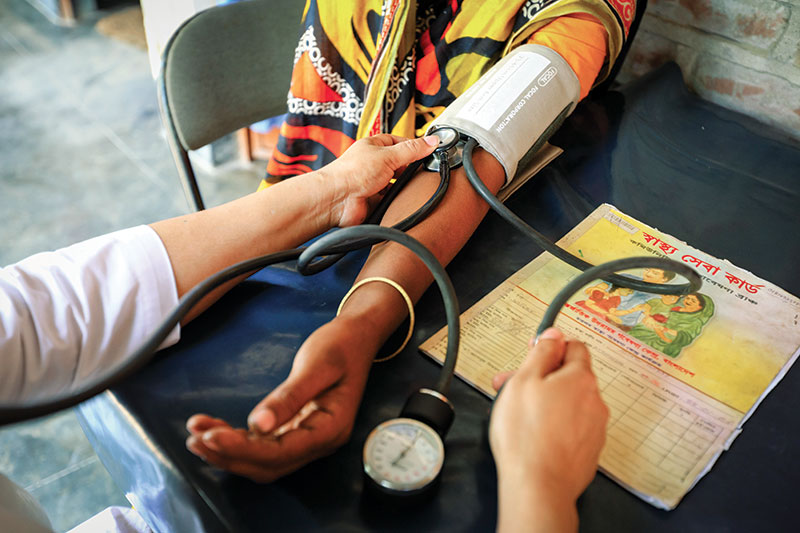Bangladesh has come a long way in improving its health indicators over the last 40 years. The achievements in the health sector were made possible due to the priority given to communicable diseases by both the Government of Bangladesh as well as non-government organisations. However, non-communicable diseases (NCDs) such as cardiovascular diseases, diabetes, chronic respiratory diseases, and cancer have begun to greatly impact public health in developing countries.

NCDs are now considered to be the leading cause of mortality worldwide and are a serious public health threat to developing countries. According to the World Health Organization (WHO), almost half of all deaths in Asia can now be attributed to NCDs. Even more alarming is that over 80 per cent of cardiovascular and diabetes deaths, 90 per cent of deaths from chronic respiratory diseases and two-thirds of all cancer deaths occur in developing countries.
Stroke – an aspect of cardiovascular diseases – is one of the leading causes of disability in many Asian countries, with low-and middle income countries bearing a higher burden of mortality. It occurs when an artery leading to the brain either becomes blocked or ruptures, blocking the blood supply and depriving the brain of oxygen. As a result, brain tissues begin to deteriorate and die, oftentimes causing fatality if prompt medical action is not administered. While stroke is typically associated with advanced age, the reality is that anyone at any age (even children) can be afflicted by it as lifestyle is a predominant determinant. Smoking, hypertension, diabetes and high cholesterol are the largest risk factors for having a stroke.

In Bangladesh, which is ranked 84 in WHO’s mortality rate index (out of 163 countries), stroke is the third leading cause of death. The majority of cases (82.3 per cent) occur in individuals over the age of forty; hypertension (63 per cent) was found to be the main risk factor for stroke, followed by heart disease (24 per cent), and diabetes (21 per cent). A lack of information and poor control and management of risk factors have contributed to the growing incidences of stroke.
Access to care for stroke is scarce, and limitations in the capacity of the local health facilities to manage stroke are well-researched, particularly in primary care facilities. A study published by icddr,b this year explored care-seeking patterns among individuals who have survived stroke in 2014 in Matlab, a rural district of Bangladesh. Dr Aliya Naheed, head of icddr.b’s NCD initiative and co-Principal Investigator of the project, stated that the research found that the majority of stroke survivors were brought to a health facility and treated by a qualified doctor. However, only about one-third of patients who died of a stroke in the same community were brought to a health facility, which may be attributable to poor knowledge about the severity of stroke and poor access to care in the community. Strengthening capacities of the primary care health workforce for basic stroke management and efficient referral to specialised hospitals may improve survival of stroke victims, particularly in rural areas.
Today marks World Stroke Day, observed annually to raise awareness and organise campaigns to highlight the importance of reducing death from stroke. This year, advocates are emphasising preventive methods, touching upon the fact that 90 per cent of all strokes can be traced back to 10 key risk factors.
For many living in Bangladesh, the financial burden of stroke, ranging from medical treatment to long-term management of the condition, is colossal. This often results in astronomical out-of-pocket expenditures which many are unable to bear.
As the leading cause of strokes, hypertension can be managed if regular physical activity was encouraged – just 30 minutes of exercise five days a week could prevent 1 in 20 cases of cardiovascular disease. Moreover, the damage caused from smoking and tobacco usage cannot be ignored as smokers have a much higher fatality rate from stroke than non-smokers. Better food choices are also critical, including a low-sodium diet and incorporating lean protein and more fruits and vegetables.
For developing countries such as Bangladesh, promoting healthy lifestyle practices and better diets are low-cost approaches which could potentially save thousands of lives by preventing strokes before they occur.

